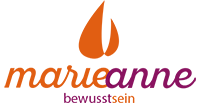Software quality assurance Wikipedia
The actual testing and integration phase comes next, where different pieces of code are combined into one solution, and we can conduct a comprehensive verification of the final, completed product. CI and CD involve various tools and methods, such as version control, code review, build automation, testing automation, deployment automation, and monitoring. Some of the latest CI and CD tools for software development include GitHub Actions, GitLab CI/CD, Azure DevOps, CircleCI, and Travis CI.
Change requests, test findings, audit results and review reports are all documentation examples. To keep stakeholders informed, the SQA team needs to provide regular reports. We perform audits to assess the software development activities against defined standards in order to see the gap and act accordingly. At the end of the audit, the definition of problems and required corrective actions are reported to project stakeholders. To evaluate project operations at each level, the SQA team establishes clear milestones and performance metrics.
Software Requirement
Software development teams typically use one or a few of the following standards explained below. Internally, organizations evaluate the complexity, structure, flexibility, readability, testability, and coding practices used in the program or programs that make up the software product. Organizations must ascertain both internal and external characteristics of a software product are up to par.

As software integrates itself deeper into our everyday activities and systems, ensuring its quality, functionality, and security becomes paramount. You should plan your approach to quality assurance from the very initial stages of software development. To do this, you should outline the testing goals, resources, responsibilities, processes, and scope for each release. For best results, interweave QA into the development methodology itself, at every step along the way. This is one of the most important steps of the hiring process for developers. It’ll allow you to fully understand if the talent is really aligned to the company and project.
These Are The 15 Top Codecademy Courses of 2022
It’s fairly common for businesses to go the mobile app route in contemporary software development. They’ll cross out a couple of months on their calendar, get a grasp of Java or Swift – for Android or Apple respectively – and be on their way. The high-level abstraction of C combined with its low-level alliances make it a great language for this sort of development. Portability describes how compatible certain computer programming languages are in diverse environments. In the case of C, the language plays a major part in Windows, UNIX, and Linux operating systems, demonstrating its portable nature. As a programming paradigm, structured programming allows developers to make complex programs by compartmentalizing their codes into simpler structures via task-oriented functions.

End-to-end software testing has become crucial to keep pace with the ever-increasing demand for higher software quality. The QA process ensures that the wider goal and vision of the business is achieved by delivering software that meets all quality requirements from both technology and business perspectives. This is usually achieved using various software quality metrics that allow managers and developers to observe activities and track changes from beginning to end.
What Are the Benefits of Software Quality Assurance (SQA)?
Structured programming is a programming paradigm that favors one, singular structure per program. And the idea is to work diligently at finding and fixing bugs until this occurs. Examples of what organizations examine to guarantee external quality are reliability, efficiency, maintenance cost, and reliability. Testing manually can be a very monotonous and time-consuming task, as previously mentioned. No one wants to perform the same actions again and again, and repeatedly test old features. In the worst case, products need to be recalled or they can cause accidents involving loss of human life.

Some of the latest automated testing tools for software development include Selenium, Appium, Cypress, TestComplete, and Katalon Studio. These tools support various types of testing, such as web, mobile, desktop, API, and performance testing, and can integrate with other tools and frameworks, such as Jenkins, Cucumber, and TestNG. Our over 20 years of experience in the IT industry have shown us that companies worldwide have diverse needs when it comes to Quality Assurance, and we aim to meet these needs with our offering. We provide end-to-end quality assurance processes throughout the software development cycle, and we also supply our specialists through staff augmentation. Everything depends on the client’s needs and their expectations for a solution, as well as their resources and capabilities. In the case of validation, it’s worth mentioning a recent shift in approach, namely moving from CSV to CSA or Computer Software Assurance.
S. Reliability Models
A good interview can extract valuable information from candidates that will make it possible for you to decide whether they will continue in the process or not. For that, it’s essential to have good questions to gather answers regarding technical and soft skills. For that reason, their role in carrying out bug fixes and writing code that runs well is also software quality assurance. But in reality, everyone in a software development team is responsible for software quality assurance. Documentation of this kind prevents reworking or renegotiating any of the processes or roles defined in the software quality assurance plan.

There are many types of tests used in code inspection and we will examine the most popular ones further in this article. Preparing thorough documentation that describes every process is a must for every project. This way, the whole team knows what the dos and don’ts are and how to perform each step. It should contain all the information that anyone would need while working on the product.
What is the importance of software quality assurance?
Besides meeting the general requirements of your project, your development team should meet certain standards of technical quality on which the software development industry relies. Ensuring these standards are comfortably yet rigidly met is what software quality assurance entails. Quality assurance (QA) is an essential part of software development that ensures the quality, functionality, and reliability of software products. QA involves various tools and methods to test, verify, and improve software quality throughout the development lifecycle.
- Tests applied to the code by a third party (tester, not code author) to find bugs and eliminate them before they escalate in the project.
- By following the standards and procedures defined by a QA program, teams can prevent product defects before they emerge and become an issue.
- The Flutter framework is intentionally and wholeheartedly tied to UI design.
- Through rigorous software testing best practices, software QA professionals identify potential issues, vulnerabilities, and areas for improvement, ensuring alignment with both user needs and business goals.
- From the client’s perspective, software should look and work as if a single developer created it, and QA engineers help make that happen.
- The QA process in software development helps companies create products and services that, at the very least, meet the expectations and requirements of their customers.
This is why software quality assurance is everyone’s responsibility at the end of the day. To that same end, delivering a high-quality product implies less maintenance over time because your software product will be resilient in the first place. Therefore, you can spend the least amount of time and money on upkeep, if the product needs future maintenance at all. In software testing, quality, value, and price are all connected – automated testing helps to reduce risks and costs, and enable revenue growth. For example, some companies might bet on manual testing, which seems cheap and easy at first, but the costs pile up at the end of the year. With the rise of touch-screen devices and desktop and mobile applications – from the automotive to medical industries – more user interfaces are created, which all need to be tested.
What is quality assurance?
Quality Assurance (QA) refers to the meta process that ensures continuous and consistent improvement and maintenance of processes that enables a QC job. And finally, one very important part of an SQA is maintaining good relations. The entire process will move more smoothly if harmony is maintained between the QA and development teams.
Individual Plans
Software quality assurance (SQA) is a methodology to ensure that the quality of the software product complies with a predetermined set of standards. Software quality assurance is a planned and systematic plan of all actions necessary to provide adequate confidence that an item or product conforms to establish technical requirements. Not only does the cloud quality assurance tester excel at asking questions, but the questions the tester asks are specifically designed to elicit requirements. Testers‘ questions not only clarify business rules and requirements, but they can also improve the technical design and the development approach. In this post, we’ll discuss the role of quality assurance in software development.
Running regression test suites proactively uncovers these emerging defects. Continuous delivery provides constant feedback to developers and allows them to course-correct on quality if features aren’t quite stable yet. Doing this planning up front gives quality assurance the emphasis it needs during software builds. QA then becomes an ingrained part of the system rather than an afterthought. Set goals for the team member, both short-term and long-term, and identify actionable steps to achieve them.
